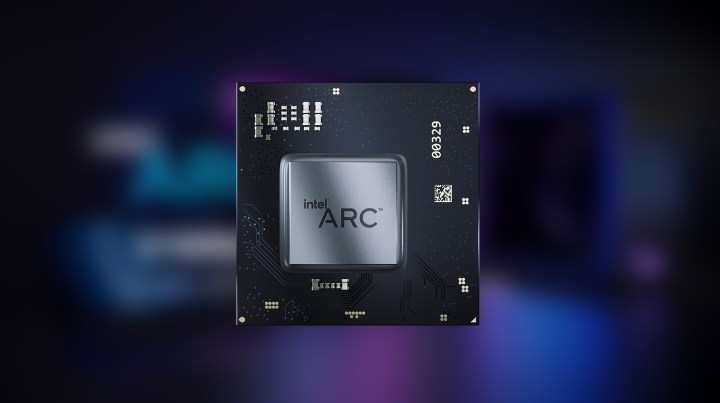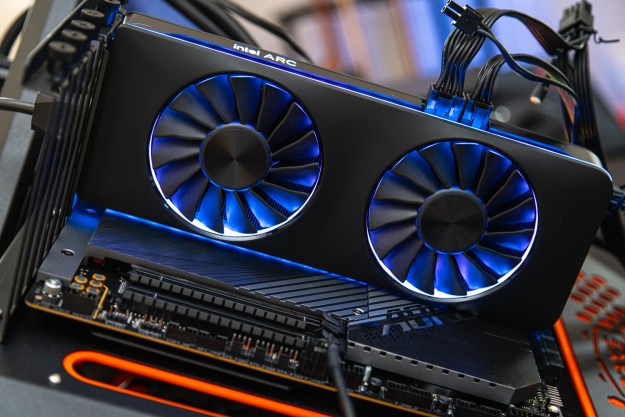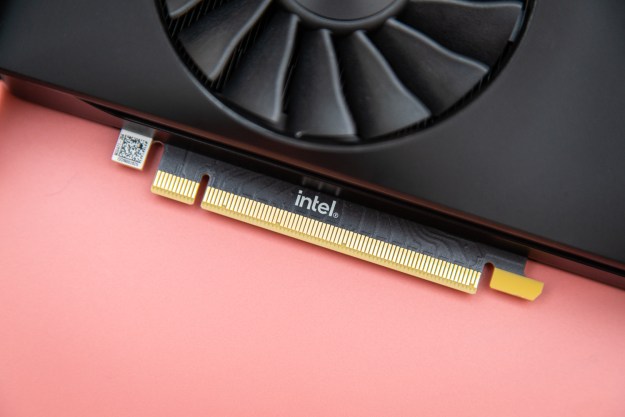Intel officially launched its highly anticipated Arc Alchemist GPUs, albeit for laptops, at the end of March. However, it seems that Team Blue has not actually released its mobile discrete graphics cards at all.
As reported by VideoCardz, Intel re-entered the GPU industry with a total of three entry-level GPUs from its Arc 3 range. Surprisingly, you cannot find let alone purchase a laptop equipped with an Arc A350 or A370M, according to several reports.

Intel has since released an update on the situation via a statement on Twitter, apologizing for confusion and pointing to a single listing for an Arc laptop — the Samsung Galaxy Book 2 Pro — available in South Korea.
Prior to Intel’s statement, VideoCardz inquired about the situation by asking its followers on Twitter whether someone had received an Arc-powered laptop. The question yielded no positive responses.
Based solely on external reports, it seems that Intel has once again delayed its launch of Arc Alchemist, despite the fact that, well, it officially launched last week.
Corroborating the aforementioned reports is an official statement from Intel.
Intel’s graphics division had shared a video on Twitter that showcased an Intel Arc GPU feature being able to “deliver higher quality videos with improved compression.” A user had asked the company “when can we actually buy them?,” to which it responded that mobile systems with an Intel Arc graphics card will be “available for purchase by the end of the second quarter of 2022.”
Hi! Laptops with Intel ARC will be available for purchase by the end of the second quarter of 2022. We suggest you follow our newsroom at https://t.co/AlNpzzMu5P for all the updates.
— Intel Support (@IntelSupport) April 6, 2022
However, as VideoCardz aptly points out, the above statement — which has yet to be corrected or updated by Intel — could be associated with the company’s complete Arc range for laptops or the high-end Arc 5 and 7 series.
The only issue here is that Intel suggested that it has indeed launched some ranges during its Arc presentation last week: The A350M and A370M were both shown as “Available starting now.”
VideoCardz also stressed that it has received various inquiries from its readers asking about which retailers are selling a laptop that is outfitted with an Arc GPU, but they — nor I, for that matter — can find any online outlets currently making them available for purchase.

Arc Alchemist customers receiving older Intel GPU instead
Even before it was officially revealed, a leak made it seem likely that the Samsung Book2 Pro laptop would be among the first products that came with Intel’s new discrete graphics cards. After it was confirmed that the product would indeed be powered by an Arc GPU, the system could be pre-ordered from March 17th.
Amazingly, according to reports on Samsung’s official forum, when the customers who paid for the Samsung Book2 Pro (via online retailer B&H) received their laptops, some confirmed that it came with Intel’s Iris XE GPU instead of an Arc Alchemist unit, despite selecting the latter as an option at the time of purchase.
Other individuals who contacted VideoCardz also mirrored the reports on the Samsung forum, stating their systems did not come with an Arc graphics card either.
Elsewhere, a Samsung Care ambassador said that Intel Arc “was an optional feature but for some reason, Samsung removed the listing from the website. It was listed for sale but it is no longer available.”
Ultimately, when taking the above reports into consideration, all signs point toward Intel delaying its first Arc Alchemist GPUs once again without seemingly telling anyone. The company is reportedly scheduled to launch its desktop Arc graphics cards in the coming months, so Intel’s plan could be to launch them simultaneously.
That said, the company has stated in the past it wants to follow a tiered release schedule for its video cards as opposed to introducing all of its ranges at the same time.
Intel previously stressed it hopes to ship 4 million Arc GPUs this year, but apparently, the industry is still waiting on the first unit to be shipped.
Editors' Recommendations
- Intel may fire the first shots in the next-gen GPU war
- Intel may be throwing away an important opportunity
- Here are all the upcoming GPUs set to launch this year
- Intel’s forgotten GPUs are still happening
- Intel isn’t giving up on GPUs yet




